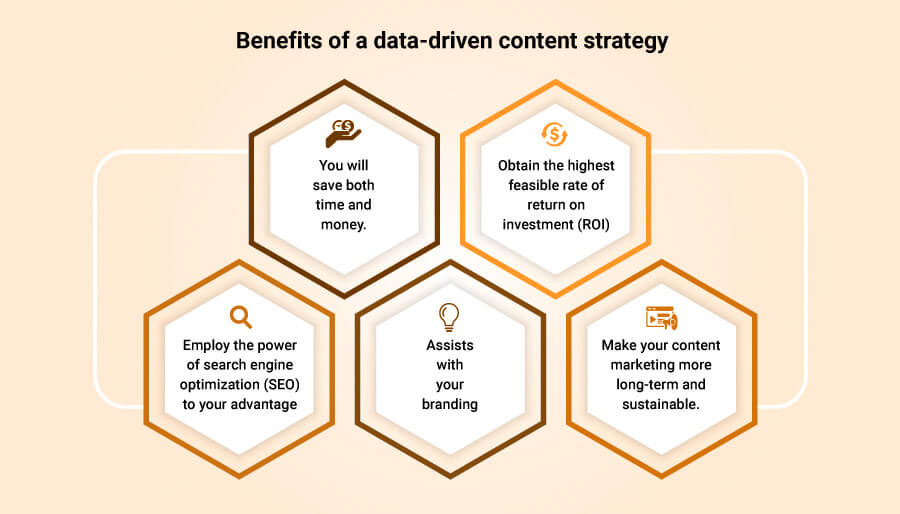
What is an impression? An impression simply refers to the number of times that a website or advertisement is viewed by potential customers. This type of marketing is great for increasing brand awareness and spreading brand awareness. Impression tracking has a higher degree of quantitative data than offline advertising. If you search for "organic chocolaty" in Google AdWords the number of impressions is 143. You can track impressions along with click-through rates in impression-based advertising measures.
An indication of future success is an impression. High impression rates indicate that your ad will be successful. It's important to ensure that your ad is relevant to your target audience if it receives low impressions. Your framing or content is likely to have low impressions. To increase impressions and reach, you can tweak the content and framing.

It is important to make your marketing content useful in order increase your impressions. Promo products and everyday wear are a great way to drive high-quality impressions. They are easily accessible and can be used on a daily basis. You can boost your impressions with products such as shirts and calendars. You should aim to build a community around the brand. It is a proven strategy to increase brand awareness.
Impressions are only worthless if they don't convert into leads. For example, a bus or radio ad with no call-to-action can be very effective because people remember it when they need the product or service. A high impression rate and low CPM may pay off in the long term. But if leads are not generated from those impressions, you will likely spend much more money than necessary.
The Return on Ad Investment (ROAS), which is based on the number users who view the ad, can be calculated by tracking the number that perform certain actions. By comparing data from other websites to determine the ROI of an impression ad, the revenue generated is then calculated. This calculates the return on advertising spend by multiplying cost of impressions by revenue generated from it. In addition to this, rich media is a growing trend in online creative. Digital files require more bandwidth that standard files. In order to render rich media creative, older systems need software modifications. Real-time auctions allow impressions to be auctioned on in real time. In contrast, static auctions bundle impressions at 1,000.

CPM can also easily be calculated by using the cost-per-thousand method. This model allows advertisers to pay for every thousand impressions of their ads. Advertisers are charged for each time an ad appears online or on mobile phones, regardless of whether the user clicks or reads the advertisement. CPM allows advertisers to quantify their costs for large numbers of impressions. This model can be used in conjunction social media and search engines advertising to significantly increase response rate, brand lift, as well as conversions.
FAQ
Why is content important?
Any digital marketing campaign needs to include content. Create valuable content if you want to attract customers. Blogging is the best method to do this. Blogging allows you to build authority within your niche. This makes you more trustworthy. You can build trustworthiness, which increases your search engine rankings. Organic searches are more popular than search engine rankings.
How can you create great content?
It is important to have interesting, useful and shareable content. The best content includes a call to action. For example, a button or link that allows users to sign up for a free trial or read more about a product or buy something from your website. It's also important to include visuals in your content so that it can easily be shared across all media types.
Is content-marketing easy to measure?
Yes! Yes! It will help you decide if your efforts were a success and if you have to make any adjustments.
It's possible to track how many visitors came through different sources--including email, social, and paid ads, as well as track conversions such sales leads and purchase orders.
These metrics will show you which pieces performed well and highlight your most important opportunities.
Is content marketing right for me?
Absolutely! It works for all types of businesses. No matter whether you sell products, provide support or offer training, creating content can help customers get to know your company better and keep them in touch.
What makes content marketing different to traditional advertising?
Content marketing is different. Traditional advertising focuses only on getting attention. Traditional advertising is often a waste of money because most people ignore it. You'll get much better engagement rates with content marketing.
Statistics
- According to our research, brand awareness, attracting traffic, and generating leads remain the key content marketing goals in 2022. (semrush.com)
- Forty-seven percent of buyers view 3 to 5 pieces of content before engaging with a sales representative. (mailchimp.com)
- An example of an overarching goal could be: "In 2022, we want to achieve a 20% increase in revenue created by organic content and generate 15,000 MQLs with a budget of $30,000." (semrush.com)
- Companies that use content marketing see approximately 30% higher growth rates than businesses not using it. (mailchimp.com)
- According to the Content Marketing Institute, 70% of B2B marketers and 86% of B2C marketers surveyed use content marketing in some form or other. (criteo.com)
- Seventy-two percent business to business (B2B) (mailchimp.com)
- Progress indicators (0–100%) allow each team member to see how attainable each goal is and understand what remains to be accomplished. (semrush.com)
- To further show the importance of this, 89% of people have stopped doing business with a company because of a poor experience. (neilpatel.com)
External Links
How To
How do I create a content-marketing strategy?
The first step in creating content for your clients is to define what kind of content. Once this is established, it's possible to start creating content. This may require you to create an editorial calendar, and plan where your content will come from. Content should always be purposeful. It doesn't really matter what content you're using, whether it's blog posts or social media updates. But they all should have a single purpose.
After you decide what content type you want to produce it is time to discover who your target market really is. You need to know who your target market is and why they would be interested in what you offer.
Next comes the task of identifying your target audience and finding ways to communicate. However, social media platforms are a fantastic way to get in touch with people. There are also other options like videos, podcasts or webinars.
After you have determined how you will communicate to your market, the next step in your content creation process is to choose what topics and types of information you want. Again, this goes back to determine why you're writing the content. What problem does it solve? Is it helpful? Do they think it will make their life easier?
Once you have an idea of the content you are writing, you can start to think about what you want to share. So, do you want to share information on your industry? On current events? Concerning specific products and/or services? Your focus is determined by your answer to this query.
Finally, after you've answered the questions, it is now time to combine everything in one package.
Every piece of content that you create must be useful. You don't want anyone to waste their time or energy so make sure you build quality into all aspects of your content.
A great content marketing strategy is not complete without many moving parts.